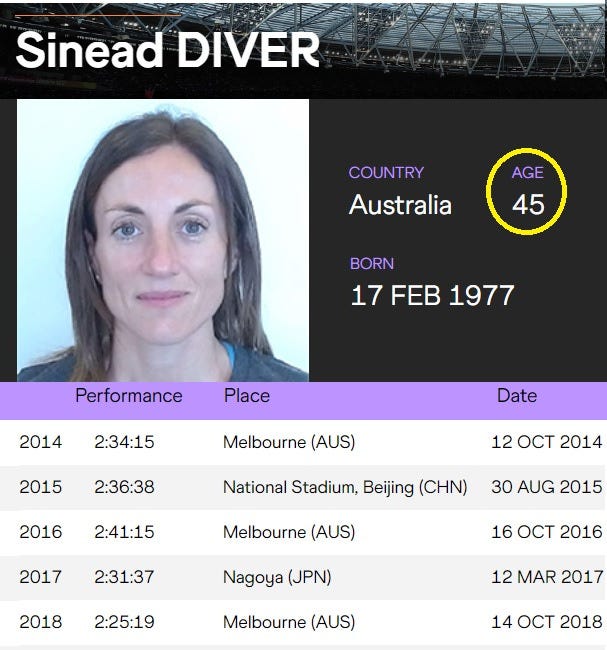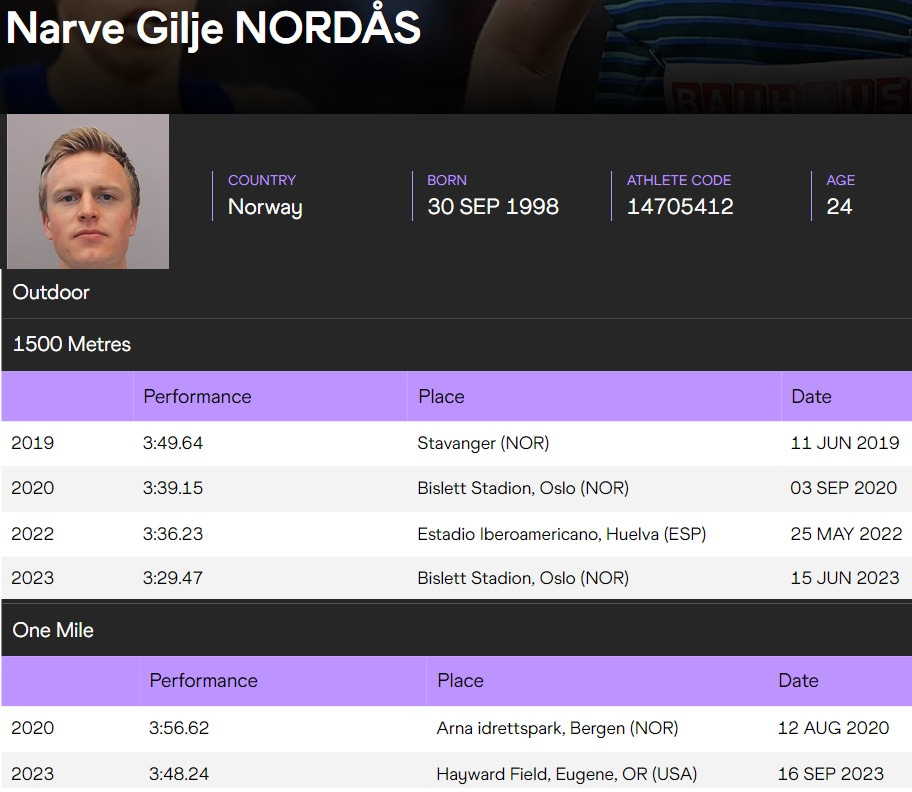A newsletter edition structurally resembling a newsletter, even if the items are randomly chosen hoorays, gripes, brain farts, and other products of cognitive bulimia
I just want to close all of these open browser tabs
Either relatively few online “newsletters” are distance-running themed, or I have managed to avoid noticing the dozens of them permeating the increasingly ridiculous construct known as cyberspace. The few newsletters that do focus largely on running tend to resemble traditional newsletters far more than Beck of the Pack does. In addition to adhering to regular publication schedules, never challenging anyone in a position of real power, and appealing to heavy users of both Ritalin and SSRIs, most of these newsletters have perhaps three or four consistently named sections—e.g., The Week that Was, David’s Bad Science Takes, and Podcasters Who Should Shut the Fuck Up—containing a half-dozen or so items that are each maybe a paragraph long.
I rarely dabble in this format. For one thing, these newsletters address events most running fans follow in real time and already know the essentials of by the time these newsletters are published. Fast Women provides a valuable service for readers who want a comprehensive round-up of race results and other happenings each week without consulting the rest of the Internet; Alison Wade really doesn’t miss a single story. But most dedicated running nerds—including myself, the distance-runner segment of Beck of the Pack‘s readership, and obviously Wade—are plumbing running sites daily and gathering this information on their own. So, for me to tell them something happened and leave it at that seems like as much of a waste of time as continually scouring the Web looking for that day’s race results and doping hijinks.
But more than trying to achieve a niche, whatever I’m writing about, I by default churn out essays that feel like lazy finger-snaps unless I bloat them well beyond 1,500 words, even when 1,000 would be “enough.” While not all of the words I use are helpful, I have a difficult time simply distributing thematically disconnected morsels of information for people to further explore on their own without first imparting this distribution with a smattering of scorn, poorly restrained skepticism with at least one foot in fatalism, and semi-random bits of personal or general-running history.
Foe whatever reasons, I’d rather prepare a cauldron of single-themed stew for people to either ladle down their throats or pour over their own heads while it’s still boiling. I just don’t have the mental focus to leap whenever the impulse strikes from topic to unrelated topic. But before this post is over, I intend to try.
Wade will sometimes work short and coherent essay-like appeals into her otherwise bullet-point-driven Fast Women newsletter. These are at least readable, even if their theses appeal to leftist shrews who believe that men should either play on women’s sports teams or stay the hell out of women’s sports entirely. But because Wade is playing a particular game with her newsletter—which is both reader-supported and corporate-supported, with New Balance having sponsored Fast Women for quite some time now—she will only sit on the fence when it comes to the sport’s most glaring controversies, because she appears to depend on her newsletter for her livelihood and therefore cannot afford to upset the wrong people.
Wade’s most recent dispatch includes the following passage:
Being a fan of elite distance running in recent years has required a complete recalibration of what a fast time is. With any leap forward of this magnitude, there’s sure to be discussion of performance-enhancing drugs.
This is intended to discredit the impact of performance-enhancing drugs by attributing mind-jarring times almost solely to improved shoe technology—as if the effects of better shoes and performance-enhancing chemicals are not additive, and as if the enhanced road-racing shoes we’re* seeing haven’t been in play for seven years (multiple athletes wore Nike Vaporflys in the 2016 Olympic marathons before practically anyone knew they existed).
Wade continues:
It’s unfortunately impossible to say who is or isn’t doping.
This would seem more credible if Wade and others were in the habit of agreeing with test results that do, in fact, establish that a given athlete has been doping—at least when their already ridiculous excuses involute even further upon close scrutiny. I’m thinking in particular of one American 1,500-meter and 5,000-meter runner whose four-year suspension is due to end within a week or so of the next U.S. presidential inauguration. It will be a week of welcoming various scumbags new and old into the public eye. The vibe will unpretentiously shift from “Shelbo was wronged, at least maybe, probably” to “She served her time, let her back in without so much mean fussing.”
Wade goes on:
To be a fan of the sport, I need to trust that the anti-doping agencies are doing their job, or that they’re at least trying. (I think they need to do a lot more, but speculating about who is or isn’t clean is unproductive.)
First, you don’t have to be confident something is free of cheating to be “a fan” of that thing. Otherwise, no one with a conscience would be able to follow professional or even most lower-level sports at all. Every for-profit cultural enterprise on offer is laden with unfairness, psychopathy, corner-cutting, and systemic degradation that favors far fewer people than it punishes. You can pay attention to something while still being careful to modulate your level of squinting and, when necessary, temporary suspension of disbelief.
Second, it’s incoherent for someone to say she’s a fan of running while claiming that this status is contingent on a level of competence she admits is absent. If Wade believes that anti-doping authorities “need to do a lot more,” than how can she possibly take umbrage when people accuse athletes of being on the sauce? She obviously does, unless “speculating about who is or isn’t clean is unproductive” has an alternate meaning.
The reality is that you can easily be a running fan while shitting on elements of the sport that expressly invite it. You just can’t write the kind of newsletter Wade does and sustain both a heavy subscriber base and the approval of the borg while being remotely honest about the borg’s underbelly and ruthless internal mandates.
I could write a post every week reviewing only the things Wade mentions and links to each Monday. For example:
Wade recently linked to a story in Outside Online titled “Leading the Way for Female Running Coaches” with the subtitle “Under Armour Coach Lara Rogers shows how women can excel in the pro ranks.” The story is actually just an advertisement for Under Armour. Although the un-bylined text claims that the Mission Run Baltimore Distance team has “recruited incredible runners,” it mentions only one, an Australian 15:11 5,000-meter runner who competed in the recent World Athletics Championships in Budapest. According to the nameless author, this was “a goal Rogers thought was three to four years away.” But the next sentence is “The Baltimore Distance athletes have huge goals, and they’re fully committed to them.” Have huge goals, but be sure to situate them three or four years in the future. Smart business sense on Rogers’ part, this. [Closes tab]
Another recent Outside Online story belongs in an informal category the publication created a few years ago called Sports Women Will Eventually Dominate That They Currently Can’t Do Well At All. This one is titled “In 2023, the Red Bull Rampage Riders Will All Be Men. Again.” and runs through the usual formula of “women are statistically under-represented here, therefore sexism presents a barrier to entry”:
The lack of opportunities for women is most apparent at the top, but the problem persists throughout the broader mountain biking community. In the U.S., only 17 percent of mountain bikers are women (compared to 40 percent of all athletes across sports), and 80 percent of professional women mountain bikers have experienced sexism in their careers.
Has anyone ever considered the possibility that women are simply less inclined to do obviously dangerous things that promise very little relative reward for simply surviving the effort? Even if women are physically capable of matching the stunts male mountain-bikers can pull off, they should be given credit for being smart enough to sit on the sidelines in greater numbers. Primate males, and those of other species, are wired to engage in ostentatiously risky behaviors; it’s a deeply subconscious version of sporting bright peacock-plumage.
But there does seem to be the issue of physical capability, too:
“We want to push the sport and not only be equal with men, but progress it to the next level,” said Chelsea Kimball…
Kimball doesn’t argue that she’s better than the male riders on this year’s roster, and doesn’t want women’s inclusion in Rampage to take opportunities away from the current competitors. “Yeah, I’m not backflipping a 30-foot drop. That’s 100 percent true,” she said, but also pointed out that many of the guys at the event have been riding their entire lives. Kimball, 32 didn’t get on a bike until she was in her twenties.
It doesn’t matter how long someone has been riding if they’re better at it. I don’t think the sport’s scoring system includes a “Started as a child” handicapping factor. [Closes tab]
That “background matters” comment reminds me of Sinead Diver’s comments for another item Wade recently linked to, a September 12 Athletics Australia story. Diver is the Irish-born Australian who ran 2:12:45 at age 45 last December.
Diver, who ran the Sydney Marathon on September 16, told the interviewer:
The focus on my age drowns out every other narrative. For me, it’s the least interesting part of my story. The fact that I carved my own path in athletics is a lot more significant.
I didn’t have the same opportunities as others growing up, I didn’t fit the typical athlete mould and I faced a lot of challenges as a result. But despite all of this, I’ve become a successful runner whilst juggling motherhood and an IT career.
I think a lot of people can relate to this, so it’s frustrating and boring when all I hear is commentary on my age.
If you type Sinead Diver 2:21:45 into Google, you might see my write-up from last December at the top. This write-up is indeed heavily focused on Diver’s age. As I’m’ fairly certain Diver knows, running has official competitive categories that are determined solely by date of birth. No categories I know of, or that Diver can name, are set aside for “Works in IT, started later, has kids.”
Diver wound up running 2:32:17 in Sydney off a first half of 1:14:55 and an opening 5K at 2:27:42 pace, so she was never chasing the glory of her youth out there. [Closes tab]The blitz of fast times in the Prefontaine Classic men’s mile two weekends ago included 24-year-old Norwegian Narve Nordås’ 3:48.24.
This guy has been competing since he was 14 or younger. At 16, he ran 8:51.92 for 3,0000 meters. At 17, he got this down to 8:29.86, about 9:10 for two miles. At 18, he dropped his time to 8:25.85 indoors and also ran a 1:08:14 half-marathon. At this point, at the age of a college freshman, he was basically Shalane Flanagan or Kevin Beck in their respective primes but with a little more speed, or Alicia Monson today but with less endurance.
In 2018, at the age of 19, Nordås ran 8:20.35 indoors, and also ran the same half-marathon he’d run the year before, this time in 1:09:23. Then, at age 20, he lowered his indoor 3K time to 8:15.47 while adding an indoor 1,500 meters in 3:49.64, a slightly superior performance but worth only a 4:07 mile. He also ran 1:04:57 at the same half-marathon in September, so even while he was starting to race shorter distances, he was clearly gaining a wealth of raw endurance.
At this point, Nordås was a solid runner, but had only lowered his 3,000-meter time by 14 seconds between the ages of 17 and 20. Generally, runners who have been active since their early teens and destined to reach the world-class level are well under eight minutes for 3,000 meters by this age.
As you can see from the image above, Nordås made a massive leap during the shutdown-riddled year of 2020, getting down to 3:39.15 and 3:56.62 for the mile (very similar performances). You can see that his progress has continued to be phenomenal since.
Now, it’s possible this guy was a bit of a dick-off until he weas approximately old enough to legally procure an alcoholic beverage in the United States. Or, I could just be underrating the unproven but much-ballyhooed magic of “the Norwegian system,” which on its published surface involves the distraction of endless, meticulously calibrated threshold running, but invariably includes an asthma diagnosis or at least access to the inhalable beta-agonist drugs used to treat the disease. I suspect a lot more undisclosed lab work is involved as well, but I don’t want to go accusing anyone of being a doper straight out of the blue and harsh the mellow of every other newsletter writer and website operator. [Closes tab]On a personal note, my running mileage took a slight hit for a couple of weeks right as the weather was cooling off, because instead of taking Rosie out for 20 minutes and then doing 40 or so on my own, I was taking her with me both times and doing 20 to 25 minutes each time because I was getting the eager-eyes at 7 p.m. when preparing to head out on my own. Any dog owner who runs can read his or her dog’s mind, and therefore knows when the dog is specifically thinking about running around, say, the University of Colorado East Campus for close to half an hour.
I have started a limited-range job across town, the kind that allows me to run there and back. I will be using this to run alone and have no choice but to mix on some hills now. No matter what happens, I wind up running for around an hour a day and wind up substituting other activities when I fall short. I claim to not be consciously planning this, but someone seems to be.
I love the fall. Rosie does too, not only because the weather becomes more bearable but because around the equinoxes, it is possible to tan indoors in my south-southwestern-facing bedroom in the late afternoon.I would miss the local trails if I departed the area, both the more crowded ones in my own neighborhood and the ones I’m re-familiarizing myself with now after a couple of years of sticking mainly to the eastern and northeastern portions of the city. And I would miss more than only the trails. Rosie is adaptable, but she would perceive the whole move as a betrayal (I checked).
That said, I am preparing to unload anew on the locals and their feckless folkways. The city is now decorated with lawn signs advertising the city council candidacies of a slate of joyously demoralized individuals. Lime Scooters are allowed all over the city now despite every user of these devices begging to be shot by a drone. And on that subject I almost was struck by a small drone being “controlled” in the park yonder by an older East Asian couple who probably built it themselves. (I’m not being racist; I just happen live very close to a campus that confers advanced aeronautical engineering and physical sciences degrees.)This was not a standard newsletter at all. It was a bunch of essays preceded by bullet points to provide the veneer of a newsletter. I may not try this again. But if I do, it will concern the Russell Brand circus that’s not really about Brand, the ongoing covid debacle-scam, the ongoing Ukraine debacle-scam and other topics most people seem to agree heartily on.




